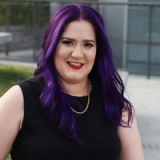You have an outstanding proposal, a presentation that would have Steve Jobs purring in appreciation, and a solution your B2B client genuinely needs. Yet, there's a hitch: the conversation stumbles as soon as you hit the pricing slide.
It's not that your product isn't worth the investment, but you can see the gears turning in your client's head as they weigh the cost against value. The lips purse. The brows furrow. And your heart sinks: “Houston, we have a problem…”
Setting prices, especially in B2B, is more than just a numbers game. It’s about understanding value, competition, and how your client perceives both. But what if we could simplify it?
We will dive into some proven strategies that align your pricing with the true value your product brings, ensuring a higher percentage of your pitches hit that sweet spot for your buyers, starting with a few common pricing hurdles.
Common pricing hurdles
If you’ve been nodding along and pricing is a struggle in your sales organization. You’re not alone. Finding the right number where all of your costs are covered and your customers are still eager to make that purchase is easier said than done.
When it comes to obstacles to setting that perfect price, here are some of the most common that we see over and over:
1. Too many options
While having some choice is good, too many options overwhelm a buyer. In fact, too many options, also referred to as “overchoice” or “choice overload,” is an actual cognitive impairment. People have difficulty making a decision when possibilities are abundant.
Remember how much easier it was to pick what to watch on TV when we only had a few channels to choose from? Now, with full cable lineups and dozens of on-demand streaming services, it can take more time to pick something to watch than you spend watching it.
Professor of social theory Barry Schwartz, studied the impact of choice overload and wrote a book on the topic called The Paradox of Choice. One of his case studies included a grocery retailer who set up two different displays of jams. In one display, there were six jams; the other contained 24. He gave buyers a discount coupon to purchase a jam; however, the display influenced how many people completed the purchase. The results: 30% of buyers exposed to the smaller display made a purchase vs. only 3% of buyers who had to choose from 24 options.
The moral of the story is that too many options become a taxing experience for the buyer, so they make no purchase.
2. Pricing for complex products
In our “Ask The Expert” sales webinar, Patrick Campbell addressed the importance of simplifying your pricing presentation in a sales proposal. But what if your product is very complex and has many options?
Many service providers and even SaaS solutions have multiple add-ons and variable features for buyers to choose from. If you try to present them all, your pricing table will likely look like a giant menu of choices, and you risk choice overload.
In these instances, Patrick recommended bundle pricing; consider rolling up some of the more commonly selected options from your product line into packages. For example, if someone will never buy product B without product A, consider including product B in a package with product A.
Remember, many buyers prefer having a solution proposed to them, plus they want the ability to select a few add-on services or features to customize their purchase further. It all boils down to understanding your buyer persona and their preferences.
Adding features to a package will impact your margins, so you should raise your price to reflect the increased value. Many brands do this effectively— as an example, retailers often offer free shipping, but behind the scenes, the shipping cost is already factored into the higher price.
As you develop your SaaS pricing packages, focus on creating value. If there’s value in your package, the price becomes less of an issue.
3. No choice at all
Now that we’ve covered the dangers of too many options, we must caution against the other extreme— not giving your buyer any options.
Presenting just one choice and one price can turn away buyers— maybe the price is too high. Or the buyer wants more services than you’ve provided and is less sensitive to the bottom line price. Different buyer personas buy (and spend) differently.
To accommodate your various buyer preferences, first, identify what each customer segment typically purchases. Naturally, each customer will have slight variations, but 80% of your offering should be standardized for your primary buyer personas and frequently purchased additions. If you’ve not done the exercise of mapping out your buyer personas for your solution, you don’t need complex tools or systems to accomplish the task.
Using a spreadsheet, list your primary buyer personas or main customer segments. Then, list the problems each group is trying to solve and what features they usually buy. You now have the beginnings of your packages and a foundation you can continue to refine and optimize. To finish the exercise, think about potential add-ons each group may want, such as priority support or white-glove onboarding, that you can present as optional services to supplement their packages.
While many sellers are timid about asking for more money upfront, many buyers will choose convenience over the extra cost. So you might be surprised when buyers upsell themselves into spending 10-20% more— and your quota-carrying sales reps will thank you, too.
The takeaway: Humans are funny, irrational beings. One price may come across as inflexible and is also a disadvantage for sellers. Providing popular packages by buyer persona plus a few optional services is an excellent way for your buyer to customize their purchase and avoid choice overload in your pricing presentation.
4. Exceeding the buyer’s emotional cost cap
Whether your organization chooses cost-plus pricing (the cost of your product plus an established markup), competitor pricing (setting your price based on your competitors’ pricing), or value-based pricing (determined through customer conversations and the value your solution provides), every product has an emotional cost cap.
Another tip shared by Patrick Campbell during our Ask the Pricing Expert webinar is that pricing is a spectrum, and as humans, it’s difficult for us to think about the worth of something. Instead, we think of value in relative terms: the cost of one item vs. another or the value one item provides compared to another.
At some point, though, a product’s cost exceeds the perceived value— we develop a range of value that leads to an emotional maximum cost. To illustrate this differentiation, Patrick gave the example of a $50 Yeti water bottle vs. his $1,000 laptop. Of course, no one would question the high price of a computer, as it’s much more complex and there are many more things a computer can do. But ask a buyer to pay $1,000 for a water bottle, and they’ll likely walk away from the purchase, as it exceeds the emotional cost cap and the value placed on the product.
If your sales reps regularly discount more than 20%, it’s a sign your pricing method may be off, or the product price exceeds your buyer’s emotional cap. Actions to take if you’re in this situation:
- Talk to your existing customers to understand their feelings about your product.
- Look at the alternative options and what your competitors are charging for them.
- Hone your value selling skills and appropriately build the value case of your product related to the buyer’s needs and objectives.
Choosing the right pricing strategy for your GTM
Once you've navigated those hurdles, you're faced with another big question: What is the best pricing strategy for your Go-to-Market (GTM) plan? The B2B landscape is unique, so your pricing model can make or break your launch. Let’s dive into five common pricing strategies to consider for your next GTM move:
1. Value-Based Pricing
This is all about understanding your customer's perceived value of your product. How much are they willing to pay for the solutions and benefits your product offers? To nail this, you've got to be in constant dialogue with your customers. Gather feedback, understand their pain points, and then set a price that aligns with the value they believe they're getting. Remember, value-based selling is less about your costs and more about their perceived benefits.
2. Cost-Plus Pricing
Okay, so this one's a bit more straightforward. You simply calculate the cost of producing your product or service and then add a markup. It’s transparent and ensures a consistent profit margin. But while this method ensures you cover costs and make a profit, it doesn’t always resonate with the value perception of your customers.
3. Competitive Pricing
The name pretty much gives it away. With this approach, you're setting your prices based on what your competitors are charging. You can go head-to-head with similar pricing, a lower price, or even a bit higher if your offering has some stellar features. Ensure you're offering something extra or different if you're going for that premium. But, if you’re target customers are more frugal and looking for a bargain, consider economy pricing. Some grocery stores like Aldi, and other small businesses, have built their value proposition and pricing strategy by catering to the more price-sensitive customers.
4. Penetration Pricing
This might be your go-to if you're entering a new market or launching a brand-new product. Start with a low price to rapidly reach a significant fraction of the market, essentially "penetrating" it quickly. Once you've got that market share and brand recognition, you can start adjusting prices upwards. But proceed cautiously; you want to ensure you don't alienate early adopters.
On the flip side, price skimming is another dynamic pricing strategy to consider- it lets you enter an under or unserved market at a higher price point and work down as market conditions change later in the life cycle.
5. Tiered Pricing
Perfect for B2B offerings with scalable features or services. With tiered pricing, you're basically providing several package options—each with a different price point and feature set. It offers flexibility, allowing customers to choose a package that's right for their needs and budget. Plus, it can reduce the 'choice overload' for potential customers by compartmentalizing options into clear tiers.
Now that you’re armed with these different pricing strategies, the key is to pick one that aligns with your company’s goals, product value proposition, as well as market demand and dynamics. If it's not quite gelling, then adjust accordingly. B2B sales is an agile, ever-evolving market; it’s important you are nimble enough to keep in step with it.
Understanding your buyer's journey & its impact on pricing
Another factor that can help you make a more informed pricing decision is taking the time to truly understand your target audience—where they're coming from, what they've experienced, and where they hope to go. Business 101, yes, but fundamentals that are worth reiterating.
Here's why mapping out and understanding your buyer's journey can be a game-changer for your pricing strategy:
Awareness stage: First impressions matter
When potential new customers first discover your product, they're not necessarily ready to buy. They're probably just realizing they have a need. If you price too high, you might scare them off. Price too low, and they might doubt your product's quality. Tailoring your introductory offers or giving special "onboarding" packages can be a great strategy here.
Consideration stage: The comparative mindset
Now, your potential customer knows they have a need, and they’re actively looking for solutions. They're comparing you against competitor’s similar products, feature by feature, and yes, price by price. Offering bundle packages, discounts on longer commitments, or value-added services can make your offer stand out.
Decision stage: Seal the deal
This is the home stretch. They're almost ready to make a decision. Understanding their journey up to this point can help you frame your pricing to align with their perceived value. Maybe it's a customized package or a trial period to alleviate risks and build their trust in your offering.
Retention and advocacy: Beyond the first sale
Remember, in B2B, the journey doesn't end with the sale. Businesses grow, needs change, contracts expire, and budgets fluctuate. Offering scalable pricing, loyalty discounts, or referral benefits can ensure that customers stay with you and become advocates for your brand.
Incorporating this market research and insight from the buyer's journey into your pricing strategy ensures you're not just setting a price, but you're setting the right price at the right time for the right audience. By syncing your pricing moves with the stages of your buyer's journey, you’re playing chess, not checkers and making your pricing strategy a competitive advantage. And in the intricate game of B2B sales, that's the move of a master strategist!
FAQs
Why is value-based pricing often recommended for B2B products?
Value-based pricing focuses on the perceived value of a product to the customer rather than its production cost or market average price. In the B2B arena, where solutions can be tailored to specific business needs and might lead to significant ROI for the buyer, the value they derive can be immense. By pricing based on this perceived value, businesses can capture a higher margin and align their product's cost directly with its benefit to the customer.
How often should I review and adjust my pricing strategy?
Ideally, a business should conduct a comprehensive review of its pricing strategy at least once a year. However, it's also wise to keep a pulse on market dynamics, competitor movements, and customer feedback continuously. Any significant shifts in these areas might warrant a more immediate pricing strategy re-evaluation.
Can tiered pricing work for any B2B product?
While tiered pricing is versatile and can work for a wide range of products, its effectiveness often depends on the product's scalability and the diversity of the target market. If a product has features or services that can be grouped into different value propositions, tiered pricing can be a great fit. But if the product is more uniform in its offering or targets a very niche audience, other pricing strategies might be more suitable.
How do I handle objections from long-standing clients when I increase prices?
Transparency is crucial when increasing pricing for long-standing clients. You’ll want to explain the reasons for the price increase, whether due to rising production costs, enhancements in the product, or market shifts. Offering advanced notice and potentially a transitional period or loyalty discount can also help cushion the impact. Remember, if they've been with you for a long time, it's likely because they see the value in your product, so communication is key.
If competitors drop their prices significantly, should I follow suit?
Not necessarily. With the competitive pricing strategy, it is essential to understand why competitors are dropping their prices. Are they trying to offload excess inventory, or is it a strategic move? Instead of reacting impulsively, analyze the situation. Consider your value proposition, sales volume, product quality, and the loyalty of your customer base. Sometimes, maintaining your current premium pricing- but emphasizing your product's unique value or quality- can be a smarter move than a price war.
Final Thoughts: Charting a Balanced Path in B2B Pricing
Navigating the intricate maze of B2B product pricing isn't just about the numbers; it's about understanding, adapting, and innovating.
While the strategies and insights shared in this article offer a guiding light, it's the continuous dialogue with your customers that illuminates the path forward. In every pricing challenge, see an opportunity—a chance to redefine value, foster deeper client relationships, and fine-tune the balance between profitability and customer satisfaction.
Our enterprise sales templates help you track buyer engagement so you can be more agile and act quickly on the pain points that matter to them, enhancing and speeding up the sales process for everyone involved. Book a demo today and see for yourself.
About the author

Marissa Taffer|Founder & President of M. Taffer Consulting
Marissa Taffer is the Founder & President of M. Taffer Consulting. She brings over 15 years of sales and marketing experience across various industries to a broad range of clients.


